Reopening ‘The Box’
'Donnie Darko' director Richard Kelly's third (and, to date, last) film expanded a short story into a mystery on a cosmic scale. Resoundingly rejected at the time, it deserves a second look.
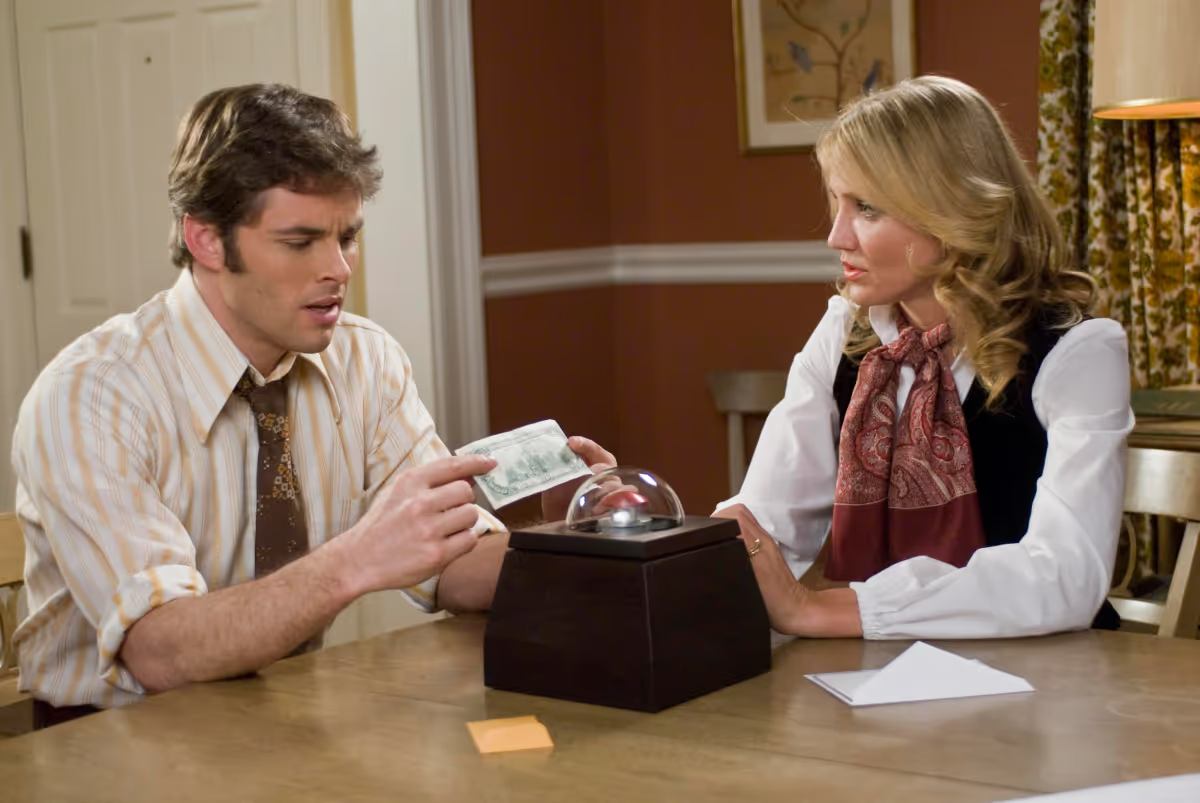
On March 7th, 1986, CBS aired the 13th episode of The Twilight Zone, an installment of the classic, Rod Serling-created series’ mid-’80s revival. It’s safe to say that, somewhere in Virginia, future Donnie Darko and Southland Tales director Richard Kelly was watching. The series had debuted with much fanfare the previous fall but had since struggled in the ratings. Though never the cultural force of the original, the revived Twilight Zone remained appointment viewing for those of a certain age and sensibility, impressionable viewers who’d be haunted by, say, the story of a woman who learned how to pause time who ended up trapped in the moment before a nuclear apocalypse or a mathematician who finds a loophole while matching wits with a demon. Or maybe they got stuck on the story of a mysterious man who visited couples after giving them an odd device and an offer that doubled as a moral dilemma. Maybe, years later, they then felt compelled to make a movie that restaged the relatively simple story on a cosmic scale.
“Button, Button” the second of two stories featured in the hour-long episode, adapts a Richard Matheson story first published in Playboy in 1970. In both the story and its adaptation, Norma and Arthur, a married couple, receive a box and a promise that someone named Mr. Steward would be visiting later to explain its contents: a simple device with a push button on top. When he arrives, Steward explains that if they pushed the button, they’d receive an impressive amount of money ($50,000 in the story, $200,ooo in the Twilight Zone version) but, as a consequence, someone they did not know would die. They debate the ethics of the situation before Norma ultimately decides, over Arthur’s objections, to push the button.
It’s here that the two versions diverge. In Matheson’s original story, Arthur dies leaving behind a $50,000 insurance settlement. “My dear lady,” Mr. Steward offers by way of explanation, “Do you really think you knew your husband?” In the Twilight Zone episode, Steward tells the couple “the button unit will be reprogrammed and offered to someone else. […] Someone whom you don’t know.”
It’s worth noting a couple of things at this point: Despite being directed by Peter Medak and starring Brad Davis and Mare Winningham as Arthur and Norma and veteran character actor Basil Hoffman as Steward, “Button, Button” isn’t a particularly strong Twilight Zone outing. (Medak seemingly told everyone but Hoffman to lay it on with the thickness of concrete.) It’s also the sole revival episode scripted by Matheson, who wrote some of the most memorable Twilight Zone episodes. But he chose to be billed under his occasional pen name “Logan Swanson,” unhappy with changes made to the script, including the ending.
Kelly was not allowed to mention The Twilight Zone while promoting The Box for Warner Bros. when the film was released in the fall of 2009. Yet it’s this version that The Box adapts and its notion of a moral dilemma spreading through the populace at the hands of some mysterious organization that propels the film. When the Norma and Arthur of The Box part ways with Mr. Steward after Norma presses the button and receives a suitcase full of money (a million dollars this time), Mr. Steward leaves with the same promise. Whichever version of the story you prefer, it seems like it has nowhere to go after Steward’s final, stinging words end it with a grim twist. But, counting its closing credits, The Box has 77 minutes left, having made its big reveal after a mere 37 minutes.
It is almost, I wrote in my review of the film in 2009, “as if Kelly spent years wondering where the button came from, and decided to make a story to find out.” Who was Mr. Steward? What organization funded him? What calculus of temptation and death arose from his rounds? And, most centrally to The Box, what happened next? The Box answers some of these questions, sometimes a bit too literally. But it raises even more and lets questions and answers play out with exacting, unsettling style in a paranoia-soaked version of 1976 Virginia, where Kelly grew up and where his father, like the film’s Arthur, worked for NASA, developing lenses for the Viking lander’s mission to Mars.
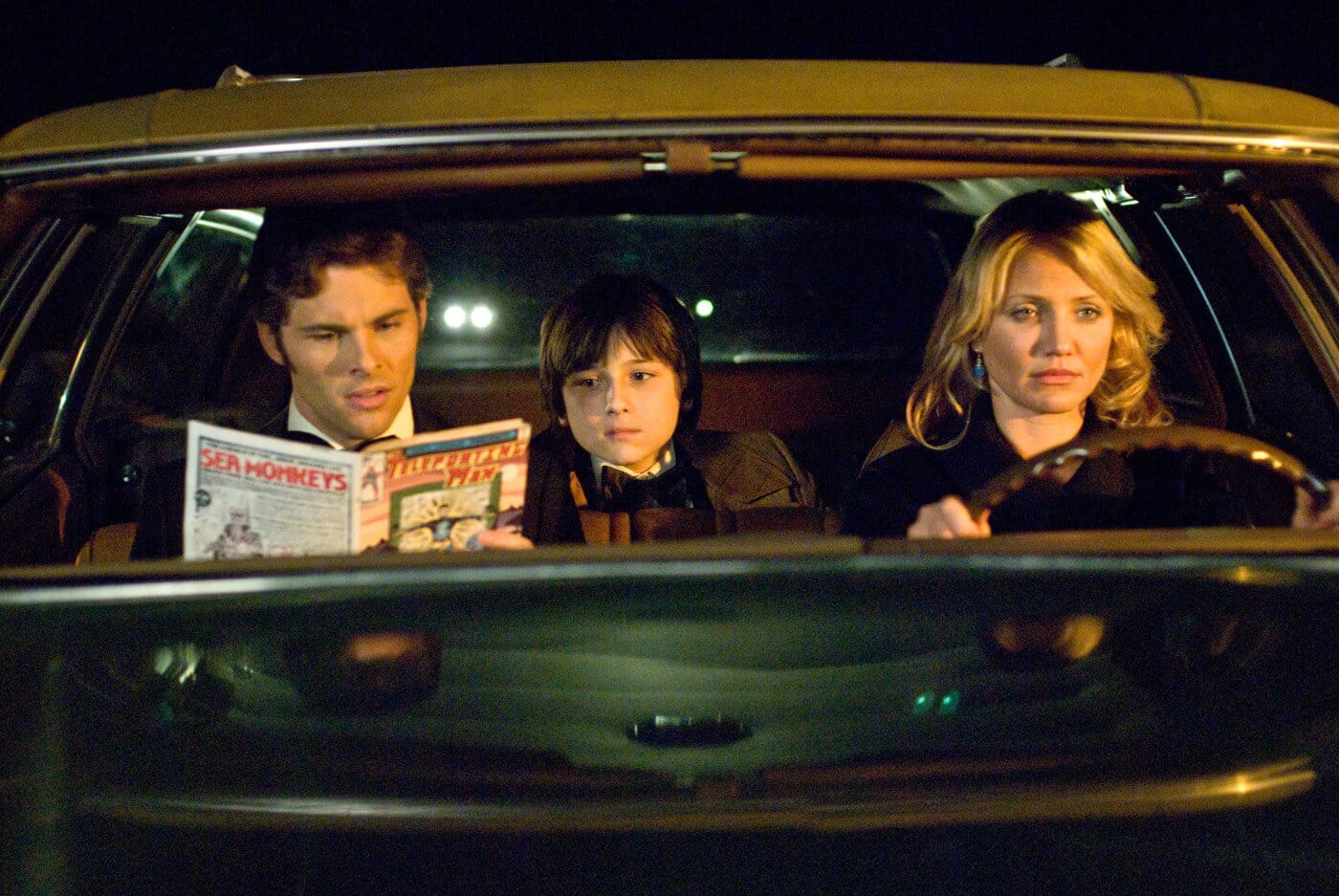
Watch The Box expecting the straightforward sci-fi thriller Warner Bros. marketed it as and you’ll almost certainly be disappointed. Put frankly, it doesn’t work as such. I’m not even sure if Kelly—despite professing a desire to make a commercial film after the failure of Southland Tales— tried to make it work as such. But that doesn’t make the film a failure. In some ways, like the button at its center, its narrative seems like a mere device. What really interests Kelly is the irretrievable past and the people who lived there making decisions of tremendous consequence that, even years later, their children would struggle to understand.
James Marsden stars as Arthur, a seemingly contented but cash-strapped engineer who, early in the film, learns he’s been rejected by NASA’s astronaut program despite having every reason to believe he’d soon be traveling to space. Cameron Diaz co-stars as Norma, a well-liked high school teacher who’s humiliated while teaching a class on Jean-Paul Sartre’s No Exit when a seemingly malicious student (John Magaro) asks about her limp, the result of an accidental disfigurement. But, unlike the couple at the heart of previous versions of Matheson’s story, The Box’s Norma and Arthur have a son, Walter (Sam Oz Stone), who slowly becomes aware that something has knocked his parents’ lives off their axis over the course of the film.
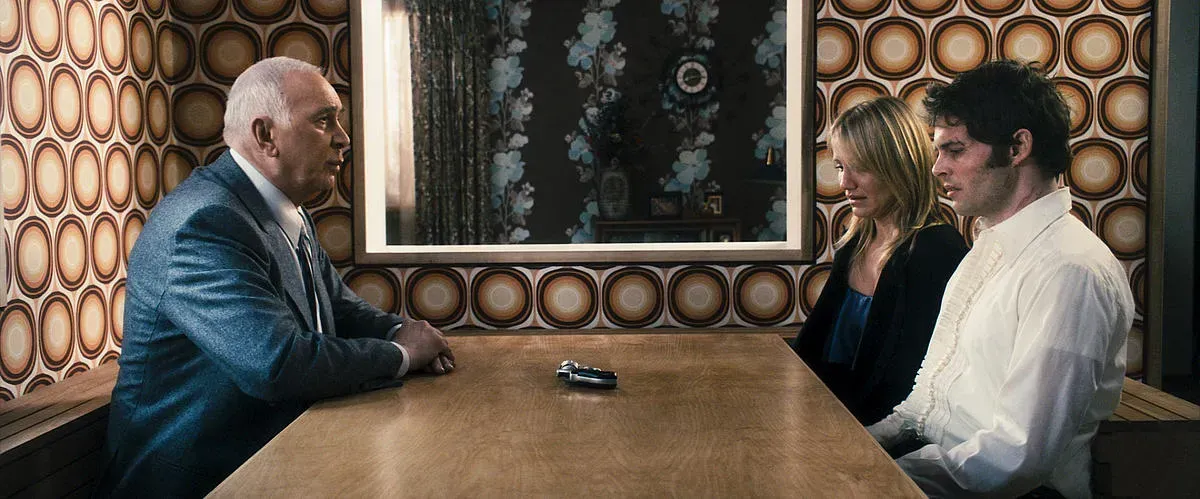
This, of course, has much to do with a box and a button, the gift of Arlington Steward (Frank Langella), a well-mannered man with a profound facial disfigurement who makes the usual offer: money with some seriously bloody strings attached. After taking the box apart and discovering nothing inside, they begin debating the matter until Norma ends the discussion by pressing the button.
Then the movie, already strange, takes one odd turn after another: Steward speaks of “employees” and soon Arthur and Norma find others staring at them knowingly, even stalking around outside their house. Friends and acquaintances begin developing nosebleeds in their presence. When Arthur drives a babysitter named Dana (Gillian Jacobs) home to a roadside motel, he discovers she’s using a fake name after she passes out in his car. Then the film follows her into the motel, which is filled with dead-eyed residents watching her arrival as she returns to a room with a map of the area and photos of Norma and Arthur’s family.
Maybe it all hangs together when scrutinized closely enough: Mars, Gerald Ford, the bubbling motel pool, a trip to the library in which both Arthur and Norma have meaningful encounters with mysterious figures, Jean-Paul Sartre, the Derek and the Dominoes song “Bell Bottom Blues.” Surfacing a couple of times, Arthur C. Clarke’s famous suggestion that “Any sufficiently advanced technology is indistinguishable from magic,” seems central to it all. Is Steward a divine force here to pass judgment on humanity one case at a time or an alien force from the unknowable beyond? Why not both? But the galaxy brain answer, as it is for all movies with allure that goes beyond storytelling logic and transcends obvious flaws, is that it doesn’t matter. The Box’s value is elsewhere.
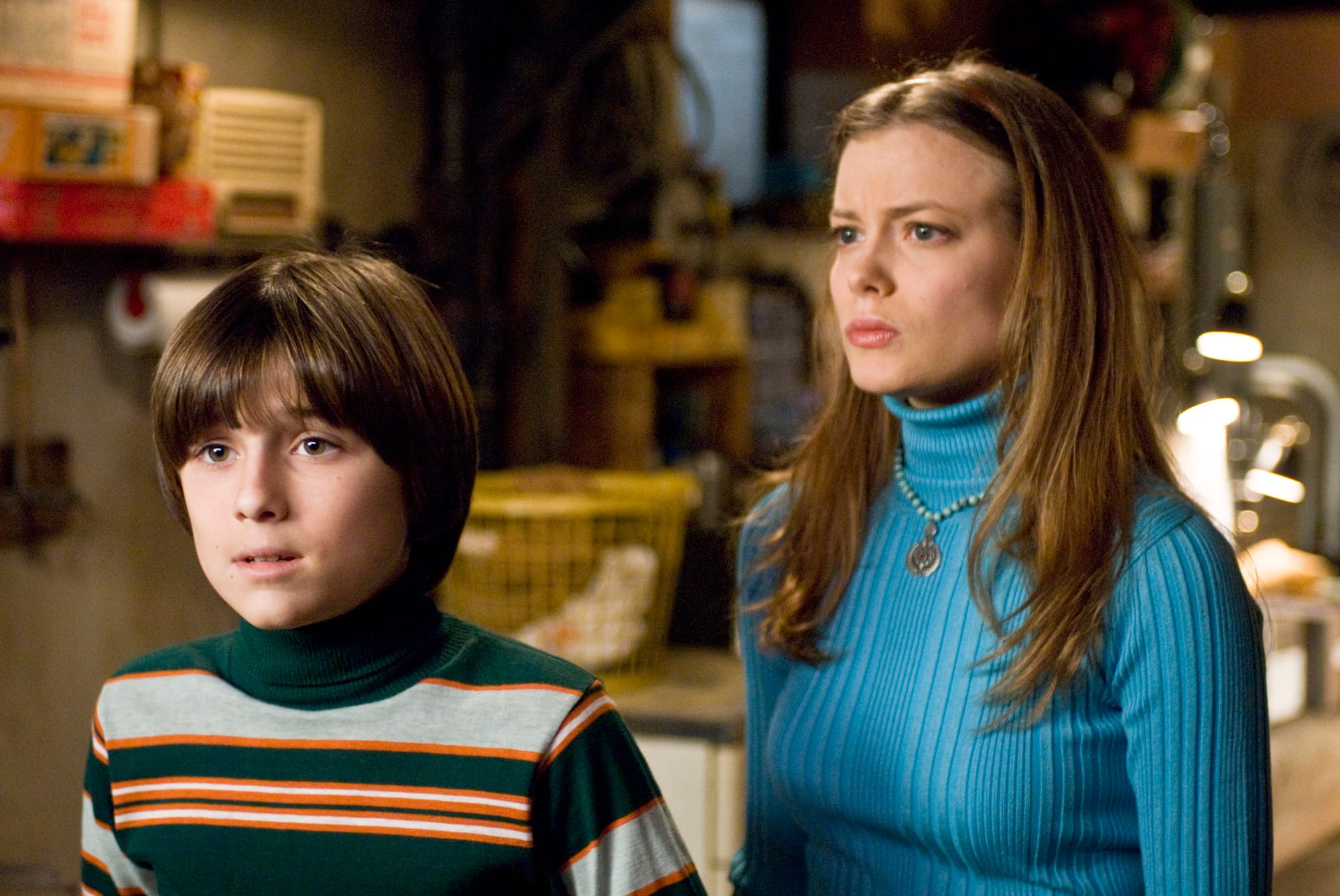
“This is a freak-out along the lines of Rosemary’s Baby, Don’t Look Now, Invasion of the Body Snatchers, or The Shining, where a director’s simple understanding of where to put a camera or when to cut away radically changes how an image affects you,” Wesley Morris wrote in The Boston Globe, delivering one of the film’s few positive reviews. As lofty as those comparisons are, the film supports them. When, while babysitting Walter, “Dana” sees the torso of a man wearing a green shirt outside the window, Kelly lets Jacobs’ face convey fear and urgency without the need to reveal anything more. Then the man’s torso leaves the frame as Dana escorts Walter to the basement. But, with the film’s unnerving score (by two members of the Arcade Fire and Owen Pallet) and cinematographer Steven Poster’s digital evocation of faded Kodachrome, those two shots—the torso and the reaction—do all the work needed to make it one of the creepiest moments in a film with much competition.
That’s what makes The Box—however overstuffed and imperfect—so remarkable and its fate so frustrating. It failed commercially and, nearly fifteen years later, remains Kelly’s last film, though not for a lack of trying. “I’ve worked on a whole lot of movies that my name isn’t on,” Kelly told The Independent’s Adam White in a 2019 appreciation of the film. And yet, as White notes, the marketplace for oddball, horror and horror-adjacent films has only grown with the ascent of A24 and Jordan Peele. Kelly’s films would easily fit into that world, yet while Donnie Darko has kept a following and Southland Tales has been reevaluated, The Box remains largely unmentioned and unloved. Concluding my 2009 review I wrote, “It’s an unwieldy, ambitious, one-of-a-kind film waiting for a cult to find it.” I’m not sure why it hasn’t. Maybe someday it will.
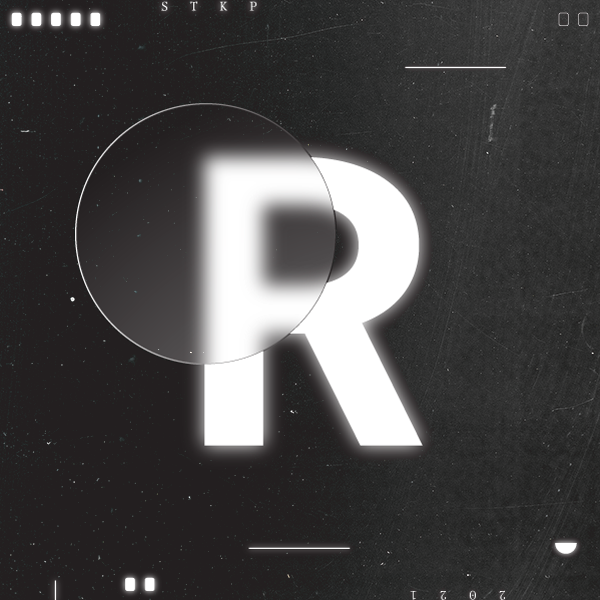



Discussion